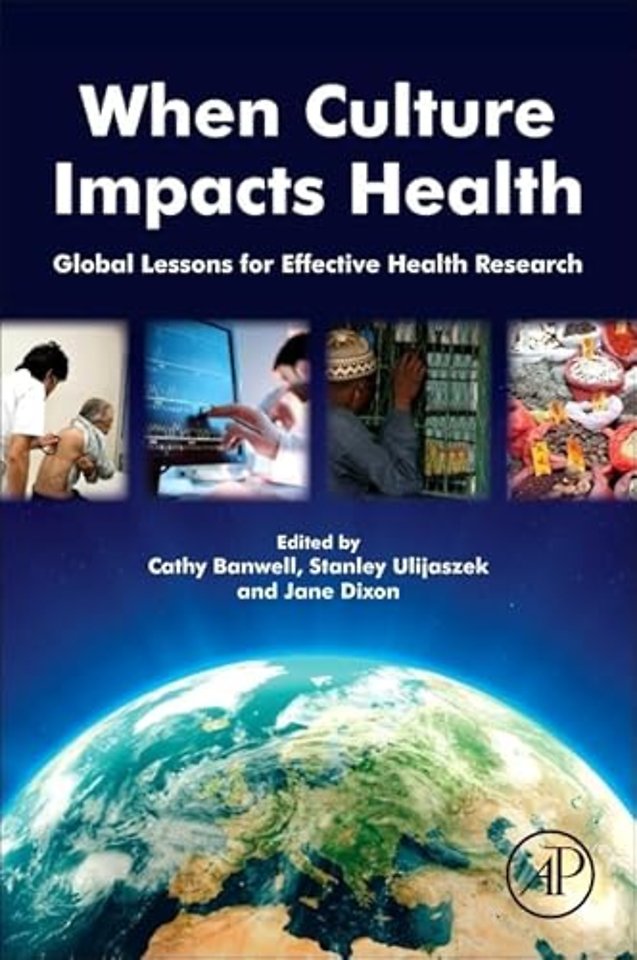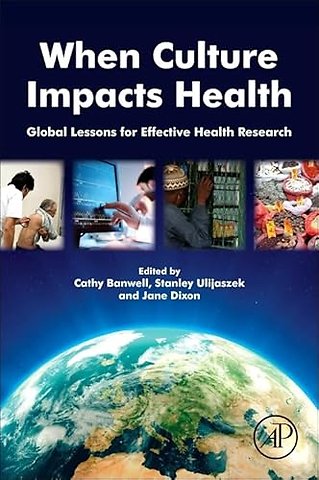<p>1. When culture impacts health</p> <p><U>Part A – Research approaches</p> </U> <p>2. The antecendents to culture in health research: perspectives from the social sciences</p> <p>3. Biological and biocultural anthropology</p> <p>4. Toward Cultural Epidemiology: Beyond Epistemological Hegemony</p> <p>5. The cultural anthropological contribution to communicable disease epidemiology </p> <U> <p>Part B - Local tales</U> </p> <p>I. Industrial and post-industrial societies</p> <p>6. Medicalisation or medicine as culture? : The case of ADHD</p> <p>7. Filthy fingernails and friendly germs: Lay concepts of contagious disease transmission in developed countries</p> <p>8. Context and environment: The value of considering lay epidemiology</p> <p>9. Identity, social position, wellbeing and health: insights from Australians living with hearing loss </p> <p>10. Framing debates about risk for skin cancer and vitamin D deficiency in New Zealand: Ethnicity, skin colour and / or cultural practice? </p> <p>11. Analysing smoking using Te Whare Tapa Wha</p> <p>12. Thirty years of New Zealand smoking advances a case for cultural epidemiology and cultural geography</p> <p>13. On Slimming Pills, Growth Hormones, and Plastic Surgery: The Socioeconomic Value of the Body in South Korea </p> <p>II. Economically transitioning societies</p> <p>14. Tacking between disciplines Approaches to tuberculosis in New Zealand, Cook Islands and Tuvalu</p> <p>15. Social determinants of health in a Papuan village</p> <p>16. Life and well-being under historical ecological variation: the epidemiology of disease and of representations</p> <p>17. Perceptions of Leprosy in the Orang Asli (indigenous minority) of Peninsular Malaysia</p> <p>18. A qualitative exploration of factors affection uptake of water treatment technology in rural Bangladesh</p> <p>19. Anthropological approaches to outbreak investigations in Bangladesh</p> <p>20. Post-Disaster Coping in Aceh: Sociocultural Factors and Emotional Response</p> <U> <p>Part C – Methodological Lessons</p> </U> <p>21. Non-Indigenous and Indigenous Australians: cultural-social positioning and health</p> <p>22. Capturing the capitals; a heuristic for measuring ‘wealth’ of NZ children in the 21st century. An application to the Growing Up in New Zealand longitudinal cohort</p> <p>23. Cultural consensus modeling of disease</p> <p>24. Meaning and measurement – research with African immigrants in Australia</p> <p>25. The cultural economy approach to studying chronic disease risks, with application to illicit drug use</p> <p>26. Doing health policy research: how to interview policy elites</p> <p>27. Thai food culture in transition: a mixed methods study on the role of food retailing</p> <p>28. Developing culturally appropriate interventions to prevent person-to person transmission of Nipah Virus in Bangladesh: cultural epidemiology in action</p> <U> <p>Conclusion</p> </U> <p>29. From local tales to global lessons</p> <p>30. Complementary readings</p>

